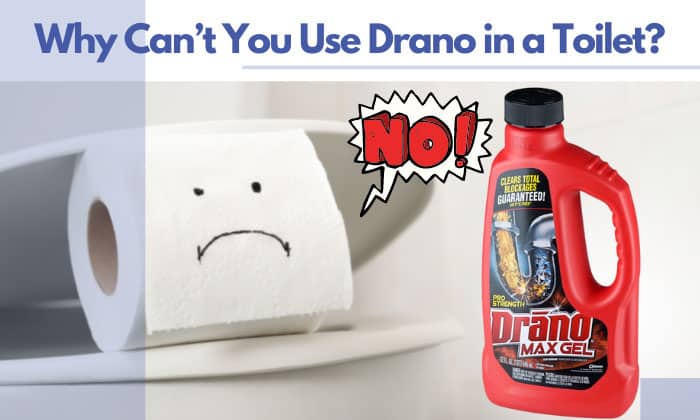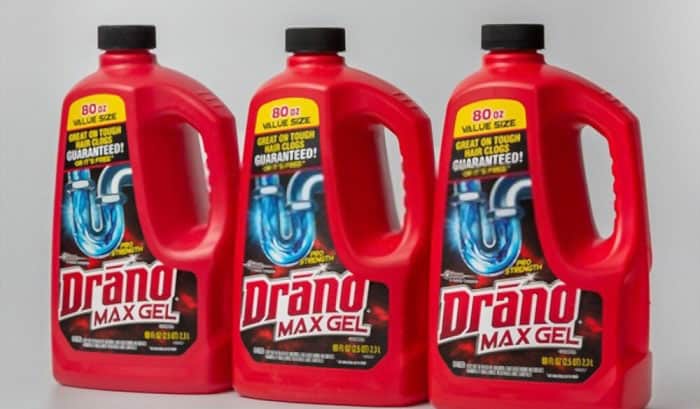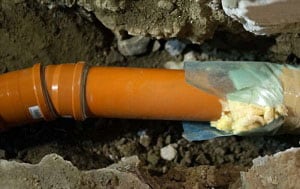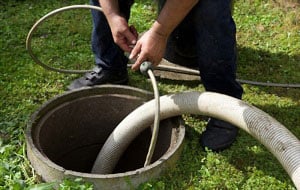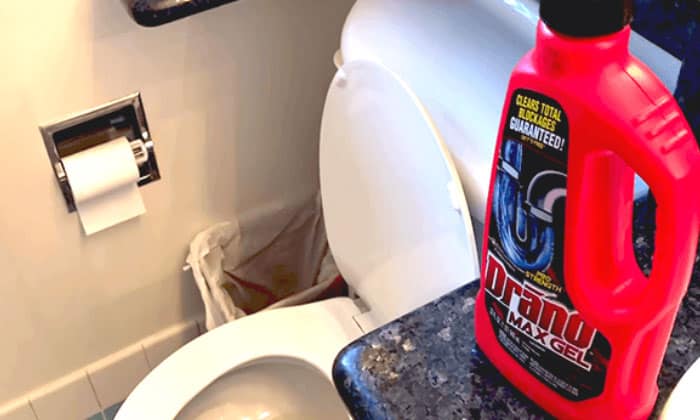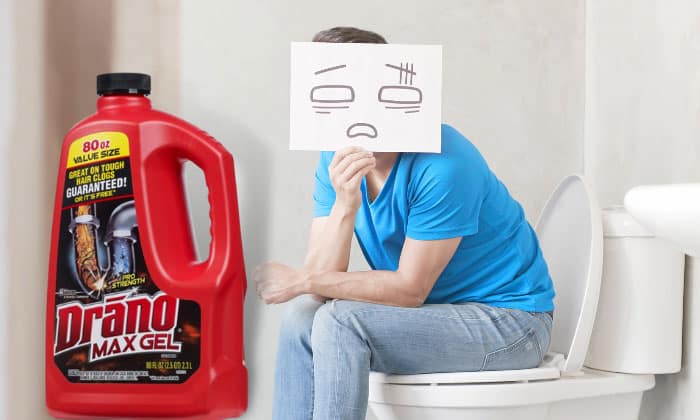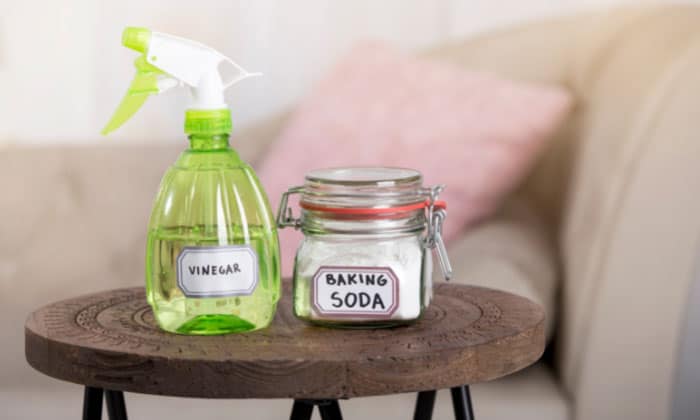When we need to use clog remover in the toilet, we automatically think of Drano. But many warn against it because it is not safe, but how so? Why can’t you use Drano in a toilet?
We don’t recommend Drano be used in toilets because it has lye, bleach, and aluminum among other chemicals. These can break the toilet’s material, corrode the pipes, and cause harm to our health and the environment through the sewer system.
Table of Contents
How Does Drano Work on Toilets?
Drano is a brand of chemical drain cleaner by S.C. Johnson and Son that is popular in solving drain clogs. However, it is not true that this drain cleaner is safe for toilets. In fact, its way of solving a blockage creates other problems for you.
This product has lye (sodium hydroxide), bleach (sodium hypochlorite), aluminum, sodium nitrate, and sodium chloride. Lye is a strong chemical that can disintegrate the clog especially when there is more heat, which aluminum generates, along with the other chemicals.
3 Reasons Why You Should Not Use Drano in Toilets
1. Drano Can Cause Physical Harm
You’re about to use liquid Drano for toilets because yours won’t flush, and you know that this product unclogs excellently.
But you’re not wearing gloves, clothes that will protect your skin, and eye protection. Drano contains chemicals that can harm you, especially lye. It can burn your skin and eyes, and too much inhalation can cause lung damage.
Dermatitis is also one of the outcomes if your skin gets repeatedly exposed to lye.
2. Drano Can Crack the Toilet and Damage Pipes
Did you know that even S.C. Johnson and Son, the manufacturers of Drano, have discouraged people from using it to unclog a toilet?
We have discussed how Drano unclogs a toilet. The chemicals in the product create a reaction that dissolves the clogs with extreme heat.
High temperature causes a porcelain toilet to develop cracks as well as soften pipes, especially the ones made out of polyvinyl chloride (PVC).
We also don’t recommend using Drano max gel in toilets especially if your house is old and has a pipe fitting system of galvanized steel or iron pipes. The product can corrode or completely break them, and pipes with holes are another problem that can be more costly than removing a clog.
If Drano damages your pipes, you might have to have your plumbing system repaired or changed which will mean more spending.
3. Drano Can Contaminate the Sewer System
We know what you’re thinking. “What do you mean contaminate? Isn’t the sewer dirty already?”
Our sewers contain aerobic and anaerobic bacteria—or the “healthy” and “good” bacteria—which break down waste such as manure, food waste, wastewater, and other waste we produce through living our daily lives.
If you use Drano to remove your toilet clog, it will go down the drain onto the sewers. Drano can kill the healthy bacteria and when that happens, there will be none that will break down the wastes that cause harm because of their composition. These wastes are the “dirty” ones, after all.
What Happens if You Put Drano in the Toilet?
Even Reddit users experience professional plumbers telling homeowners not to use Drano to unclog their toilets. Some of them don’t believe the idea, but a lot ask why.
When you put Drano in the toilet, the following might happen:
- There is a chance that it will touch your skin and irritate it, or inhale it and cause lung damage.
- It can crack your toilet and destroy your plumbing system.
- It can kill the good bacteria in the sewer system that breaks down harmful waste.
What to Do if You Put Drano in the Toilet
What if I accidentally put Drano in my toilet? Well, let’s begin by saying never to do it again. Instead, resort to non-harmful ways to unclog a toilet such as using the following:
- plunger
- snake or auger
- pouring hot water and dish soap into the bowl
- pouring baking soda and vinegar mixture or the “homemade Drano” for a clogged toilet
These are the safe do-it-yourself ways that you can try in place of using Drano. If they don’t work, that is when you need to call a professional plumber so they can check and perform solutions for the toilet clog problem.
How to Make a Homemade Drano
To make your DIY Drano, you will need:
- Baking soda
- White vinegar
- a bucket of hot water
Step 1. Turn off the water valve of the toilet. A bowl with water is not a problem, but we prefer hot water (that we will use later on!)
Step 2. Pour a cup of baking soda into the toilet bowl.
Step 3. Pour two cups of white vinegar into the bowl. Let the mixture have a fizz since that is the reaction of our two ingredients.
Step 4. Pour a bucket of hot water into the toilet bowl.
Step 5. Leave it for at least 20 minutes up to 2 hours, since we want to see and hear the water draining.
You can even leave it overnight to make the homemade Drano work.
Step 6: Once the water has drained, we can turn on the water valve and flush it. If it hasn’t, you can repeat the steps again.
However, if it really doesn’t work, then it is time to ask for help from a professional and licensed plumber.
Conclusion
Drano is composed of chemicals such as lye, aluminum, and bleach that create a strong clog dissolver at extreme heat when mixed. If so, why can’t you use Drano in a toilet?
The chemicals mentioned can cause harm to the skin and lungs as well as damage the toilet material itself. Drano can also contaminate the sewage system by eliminating good bacteria. It is better to use non-harmful methods of unclogging or asking a licensed plumber to fix the issue.

I’m Paulk Webb, and I work as a writer for Saveourwaterrebates. I’m happy to put in the time and effort to conduct market research to identify the most pressing issues faced by households concerning their plumbing. Feel free to check out our guides to get the most informed recommendations for how to solve your problems.


